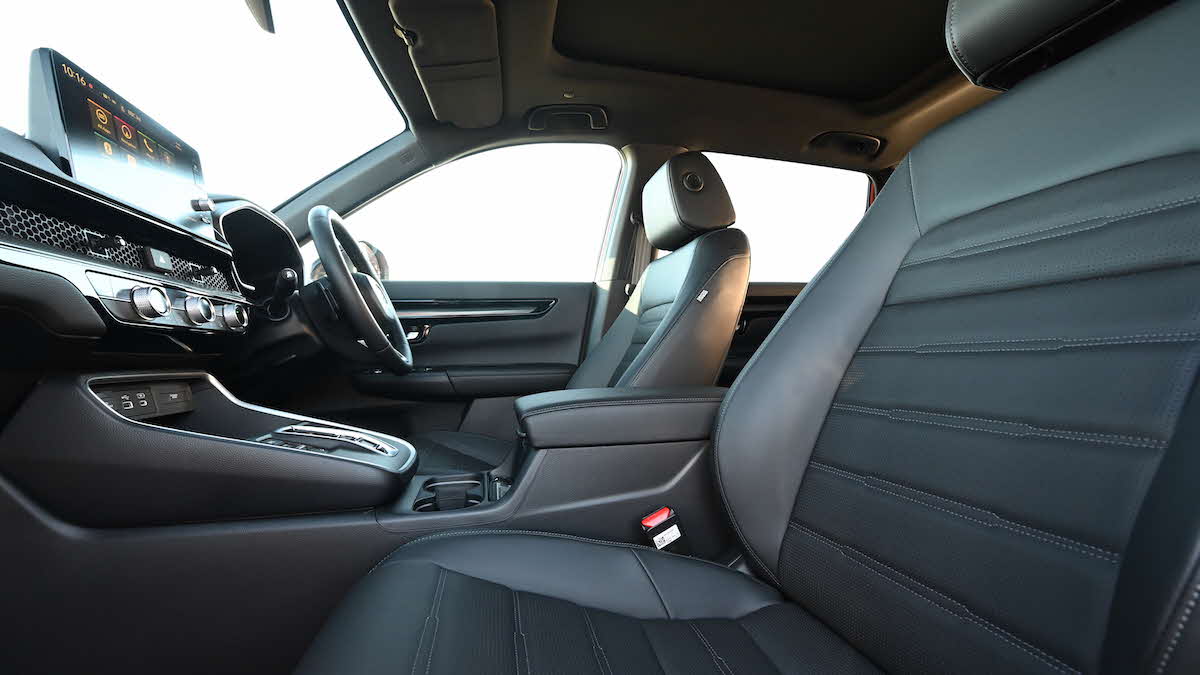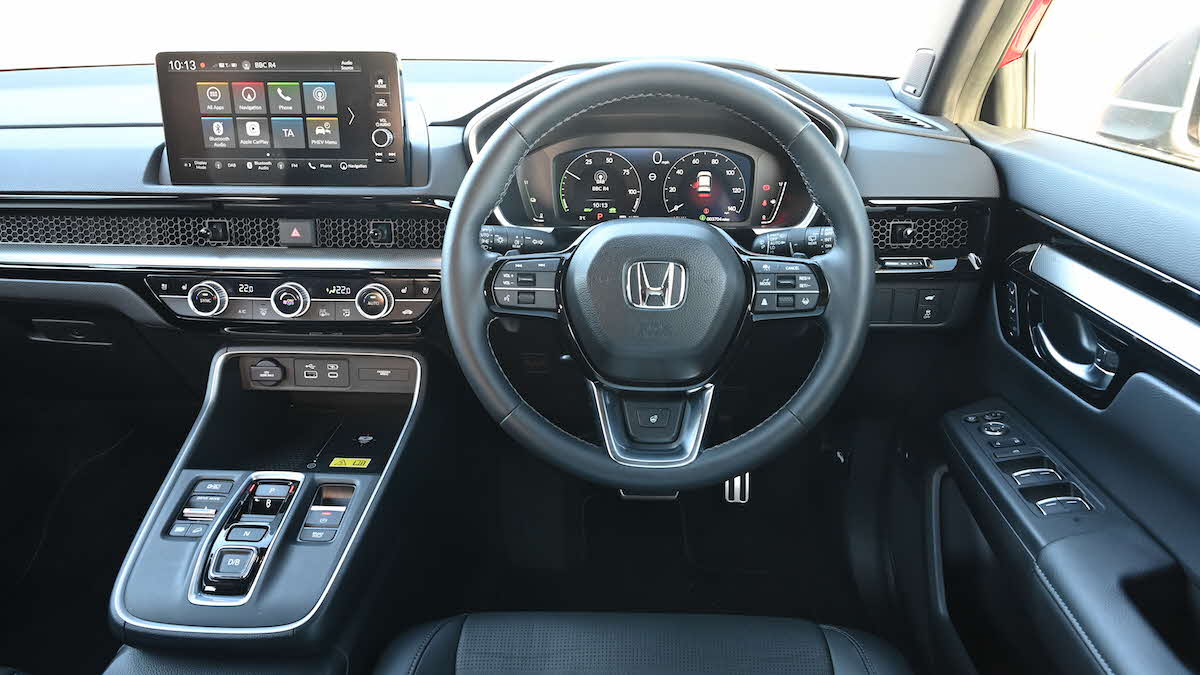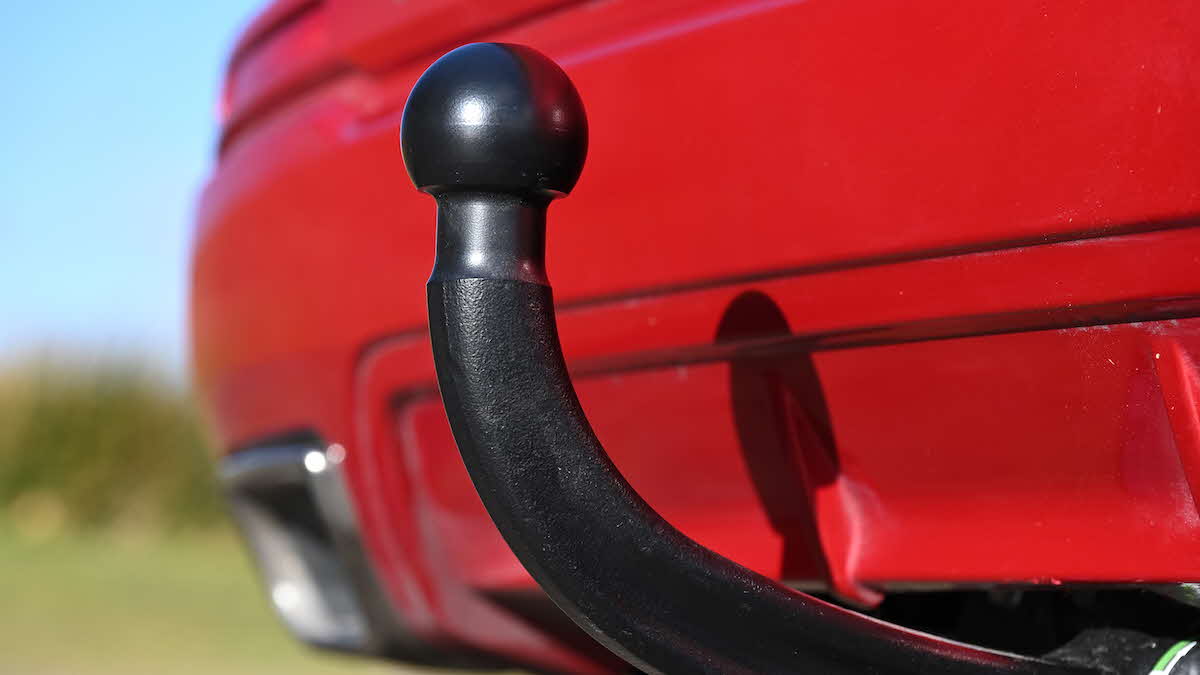Car Insurance
Trust us to find you the best deal from our panel of insurers - get your quote today
View Car InsuranceJames Batchelor puts the latest incarnation of one of the original ‘soft-roaders’ through its paces
Think of a typical towcar and the Honda CR-V readily comes to mind on account of its mature image, solid engineering and all-round practicality. The Japanese carmaker returned to the Caravan and Motorhome Club’s Towcar of the Year awards last August, where this, the latest generation of its CR-V, performed pretty well. Here we take a closer look…

The Honda CR-V was a 1990s trendsetter that, along with the Toyota RAV4 and Land Rover Freelander, popularised the idea of the ‘soft-roader’ – a more road-biased SUV that retained some of the looks of a tough off-roader (indeed, CR-V stands for ‘Compact Recreational Vehicle’).
This new sixth-generation car comes exclusively with hybrid power, and rivals everything from a Kia Sportage and seven-seat offerings such as the Mazda CX-80 to our current Towcar of the Year – Volvo’s XC60. That’s some tough competition, and as we shall see the CR-V scores well in some areas but struggles in others.
The new model looks very different from the car it replaces. The CR-V has long stood out from others, with distinctive – even quirky – styling, however this one is quietly good looking, if a little conventional.
In terms of the interior, if you’ve been behind the wheel of the current Civic then the CR-V will feel instantly familiar – it has a near identical dashboard design. It’s smart and there’s some nice detailing – we love the knobs and buttons for the air conditioning controls (too many rivals have relegated this important feature to the touchscreen), and how the ambient lighting is tasteful rather than garish. However, the cabin is let down a little by cheap-feeling plastics in places, and the infotainment system is on the basic side with dated graphics – but it’s easy to use.
You sit high up in the CR-V, which isn’t always a given in an SUV these days, and this really helps with visibility and manoeuvring; back seat passengers sit even higher and have a great view. The floor is practically flat, meaning three can squeeze in if need be, and kneeroom is excellent. Every CR-V gets a panoramic glass roof, adding a touch of luxury, but this eats into headroom and consequently results in a slightly claustrophobic feel. Happily, the seat backs can be reclined in eight positions, helping to alleviate this sensation, while all of the seats can slide forwards and backwards to maximise leg or boot room. Speaking of which, space in the boot is good – unusually, the plug-in hybrid has more room than the full-hybrid at 635 litres versus 596. It’s worth noting that, unlike older versions of the CR-V, this generation is just a five-seater – there is no seven-seat option.
Prices start at just under £46,000 for the e:HEV hybrid and around £50,000 for this e:PHEV plug-in hybrid. There is plenty of standard equipment – leather upholstery, that aforementioned glass roof, a powered tailgate, electric driver’s seat and wireless phone charger are thrown in – but the CR-V can’t help but look a little pricey compared with some rivals.

While many carmakers at this price point offer a myriad of different engine and powertrain options, Honda keeps things simple.
If you need four-wheel drive for touring then you’ll have to go for the e:HEV full hybrid – but this has a maximum towing capacity of 750kg. So, if you have a larger caravan (and you most likely will) you can only go for this more expensive e:PHEV, and you’ll have to make do with two-wheel drive.
Still, the plug-in hybrid gets adaptive suspension as standard, which does an excellent job at smoothing out lumps and bumps in the road. It all adds up to a very grown-up driving experience but, on the other hand, it’s one that isn’t remotely sporty. It’s a comfortable car, though, with great brake pedal feel (for a hybrid) and good visibility.
The 2.0-litre petrol engine is a smooth unit, and naturally prioritises electric power. Honda claims 50 miles of EV range, and I managed in the region of 41 miles. Of course, to get the most out of a plug-in hybrid, you need to be charging it regularly, so consider investing in a home charging point. Driving with a full battery, I was averaging 71mpg; drive with the battery empty and you can expect 35mpg – that’s why it’s crucial to charge as often as possible (it takes 2.5 hours to charge the 17.7kWh battery pack).

Curiously, the CR-V has an e-CVT automatic gearbox with two forward gears. Honda has opted for this to allow the CR-V to better cope with both low-speed and high-speed driving, and when driving solo it has pulled it off.
In normal driving it’s not intrusive, but once hooked up to a caravan the gearbox starts to behave more like a traditional CVT. There’s a dedicated ‘towing’ mode which prioritises petrol over electric power, and consequently there’s a constant blare of revs. It’s better to keep the car in ‘normal’ mode – here it’s more refined, but still on the coarse side.
The CR-V tows in a very smooth and unflustered way and, coupled with that pillowy ride, it’s a comfortable experience. Driving alongside high-sided lorries did reveal a little rear pull, but nothing too severe. One thing that is worth noting is that during the Towcar 2025 competition, the CR-V was slow to pull away on a steep hill start.
The Honda CR-V offers a very grown-up, sophisticated driving experience, and feels properly plush on the road. High prices, and limited engine and powertrain options for those who tow does dent its appeal, though.